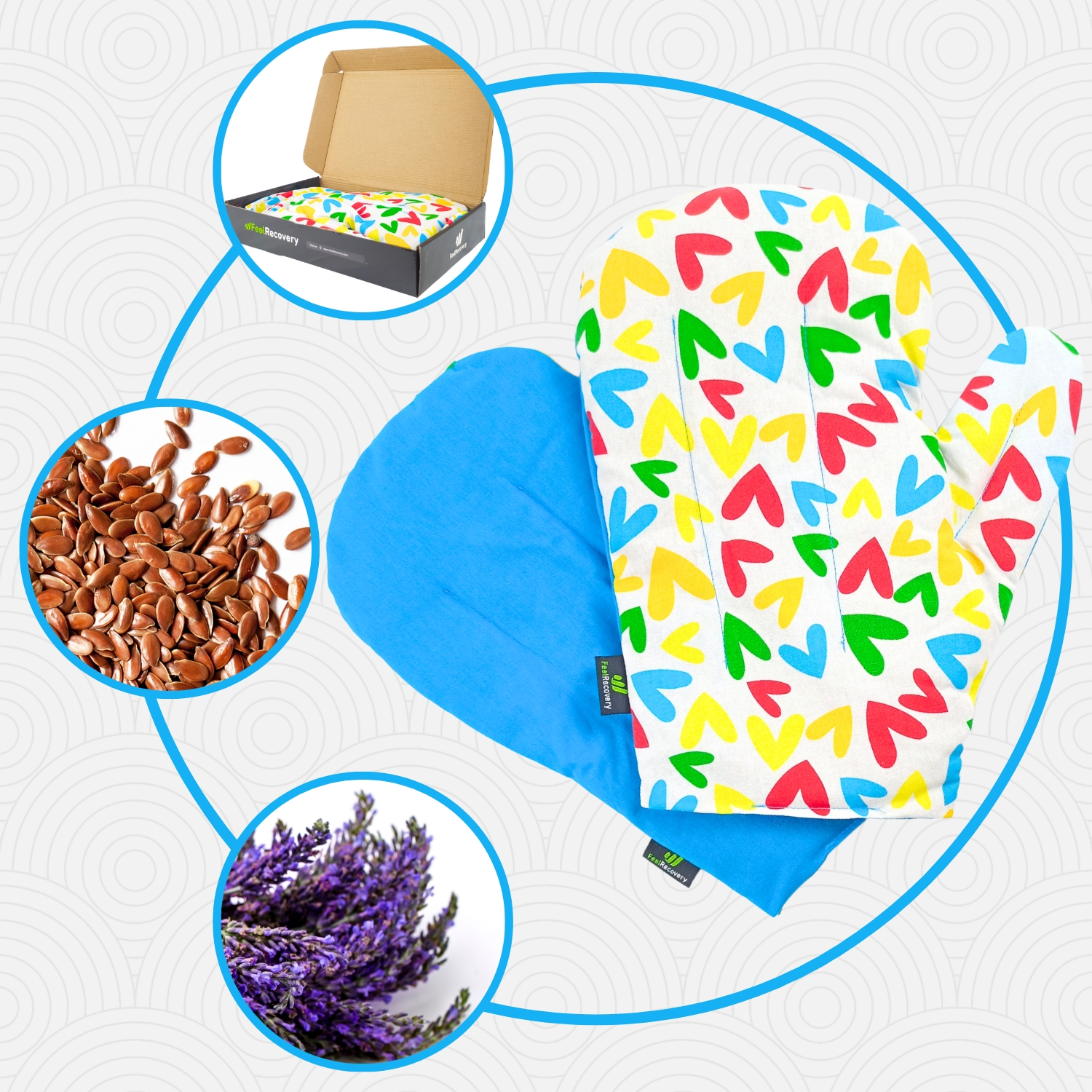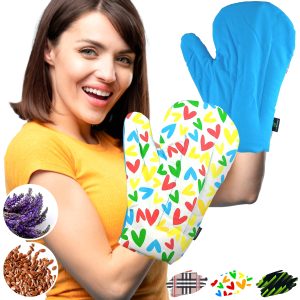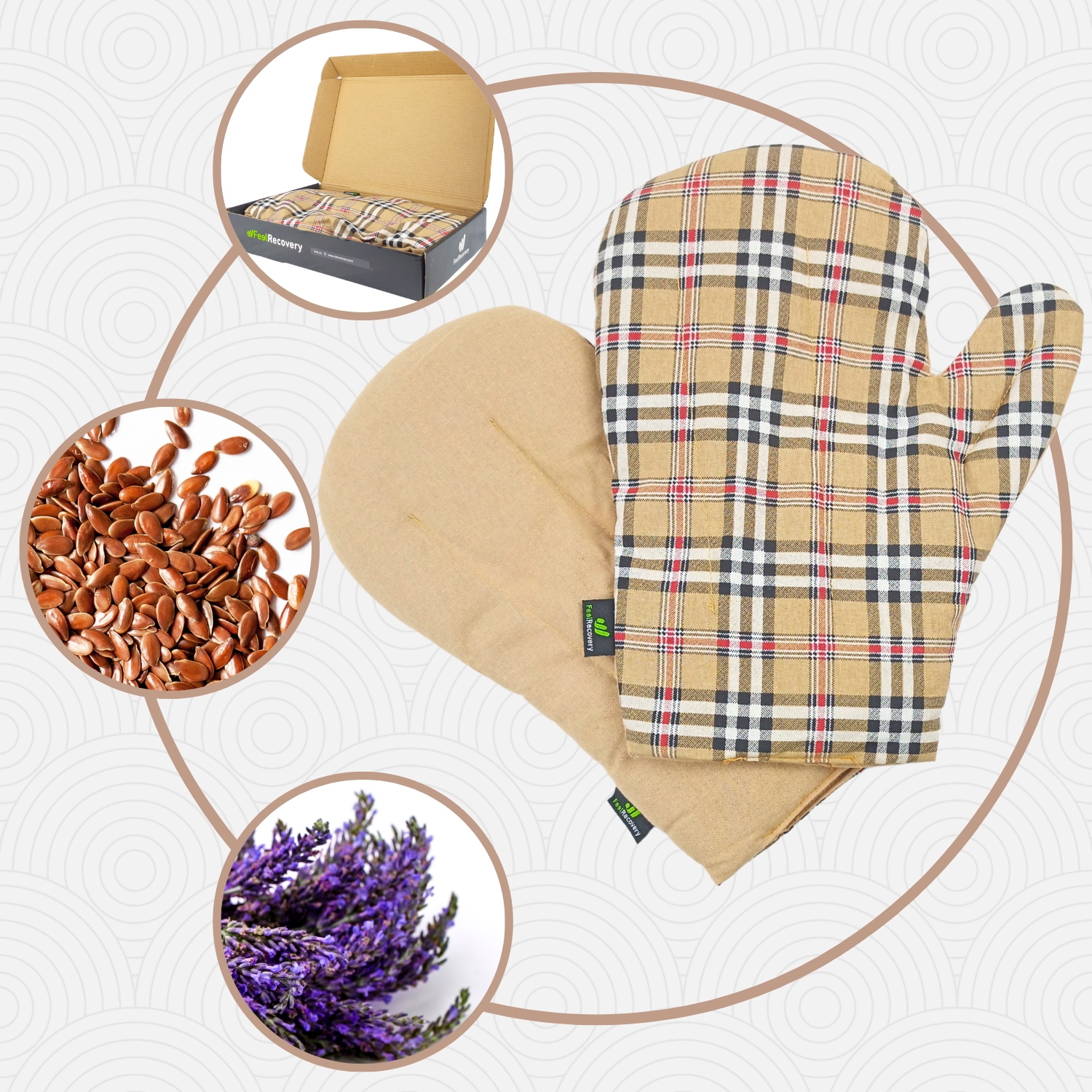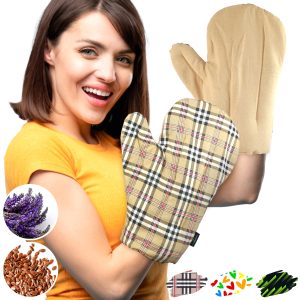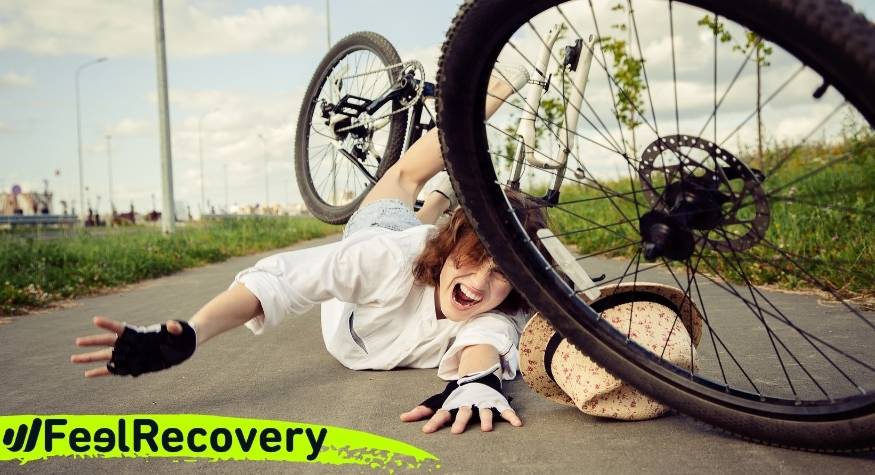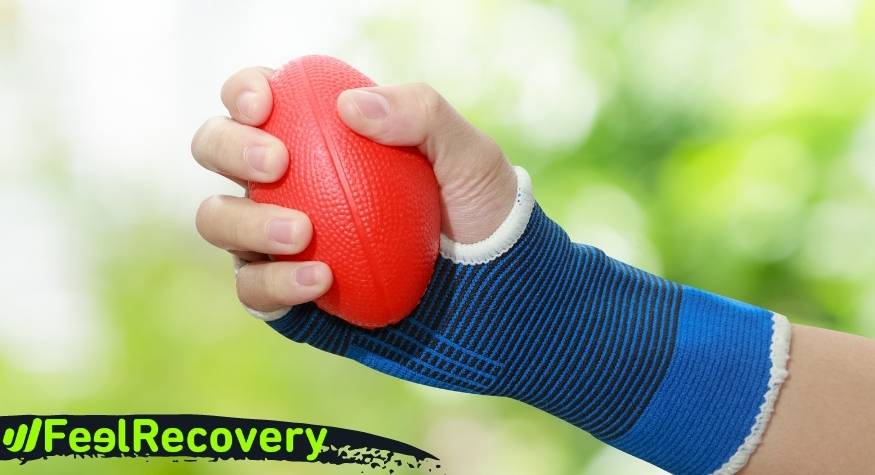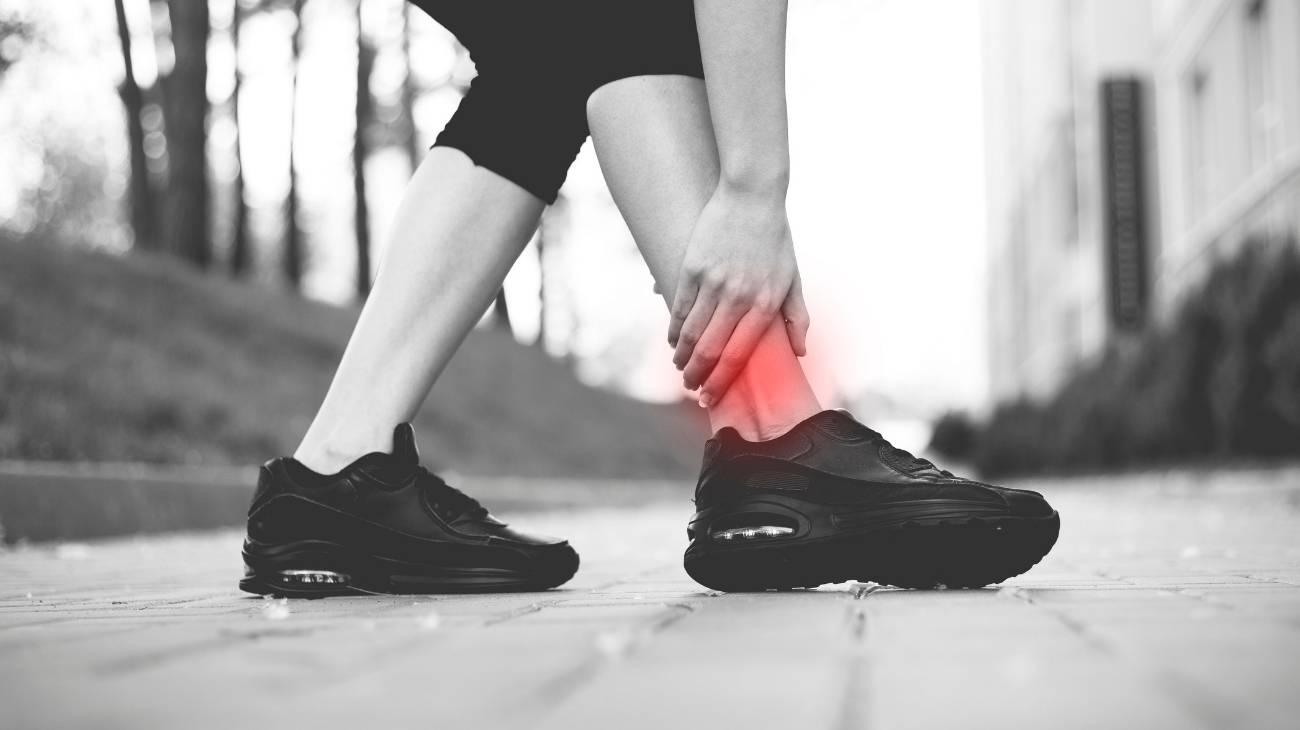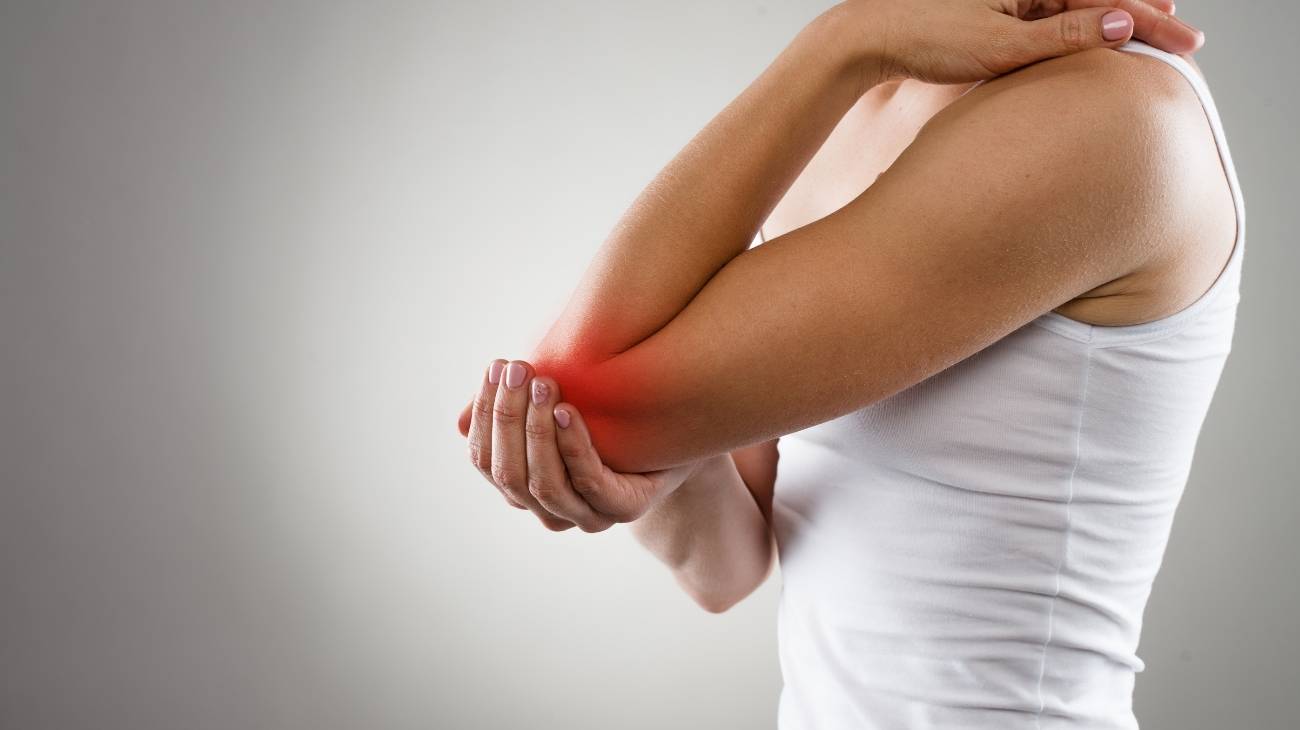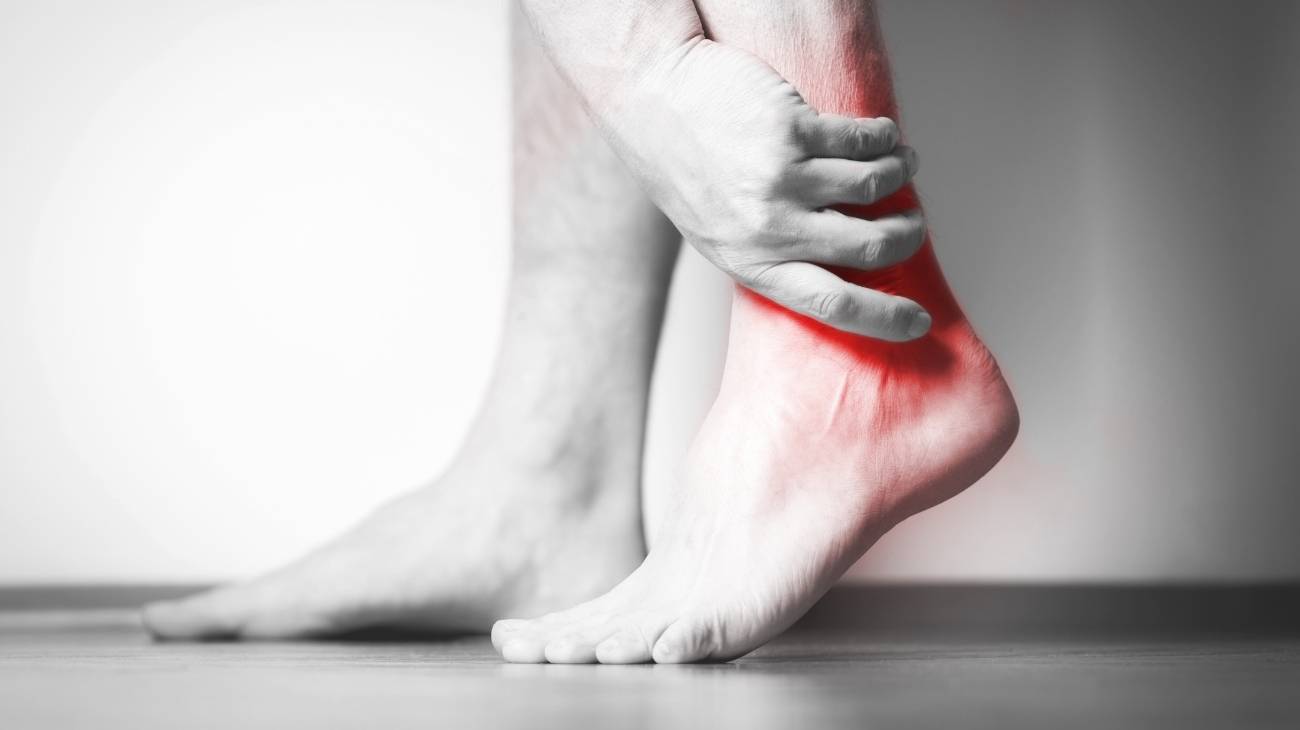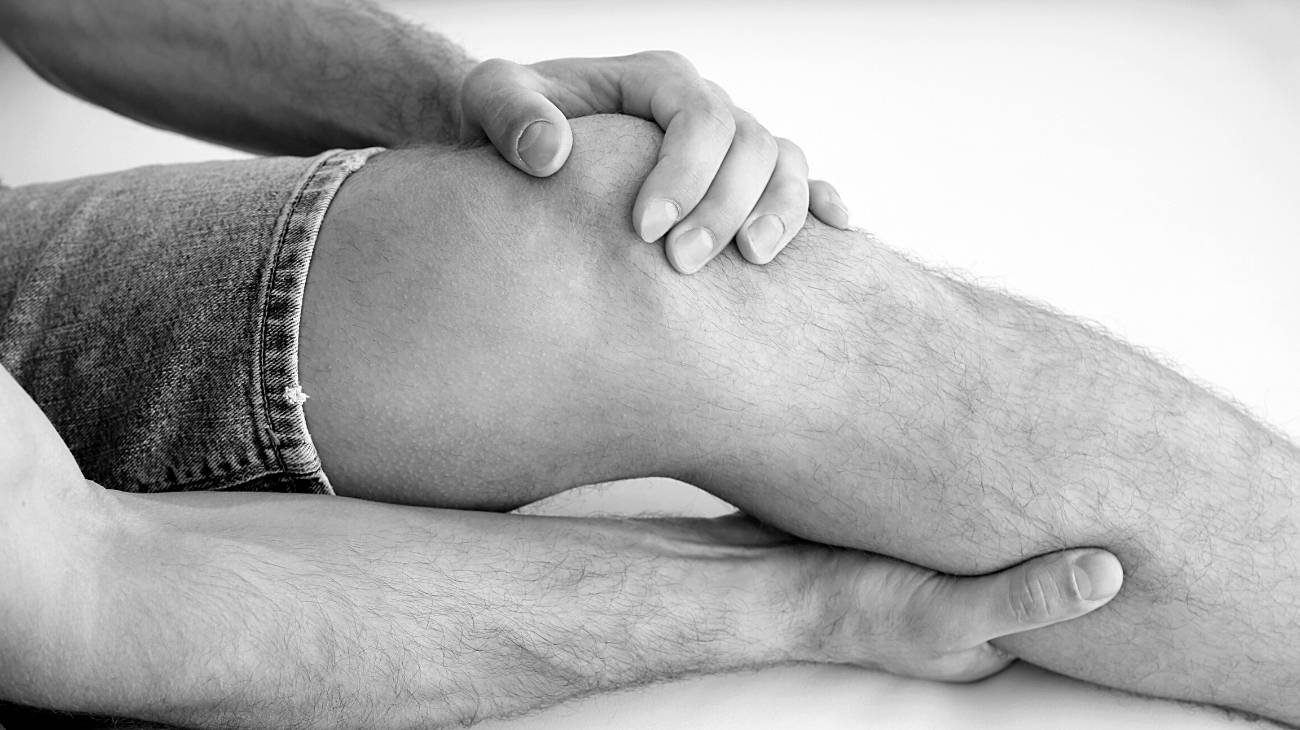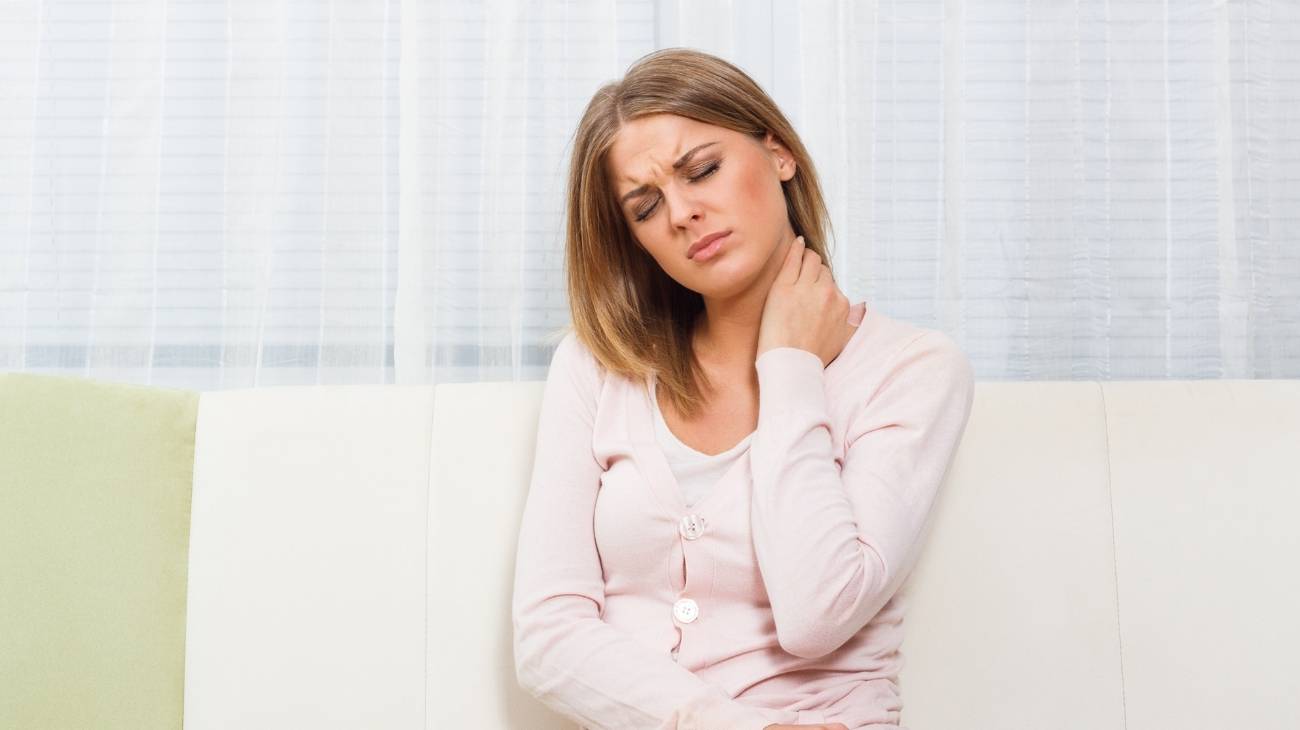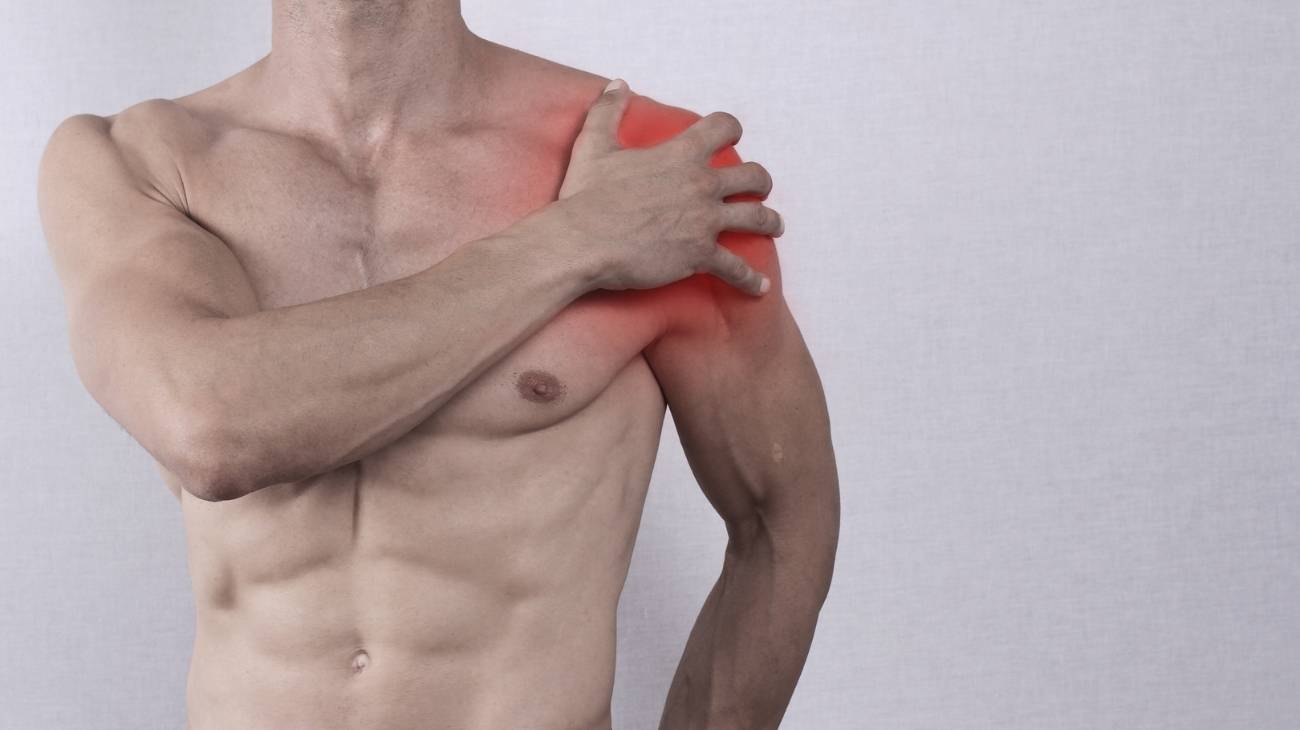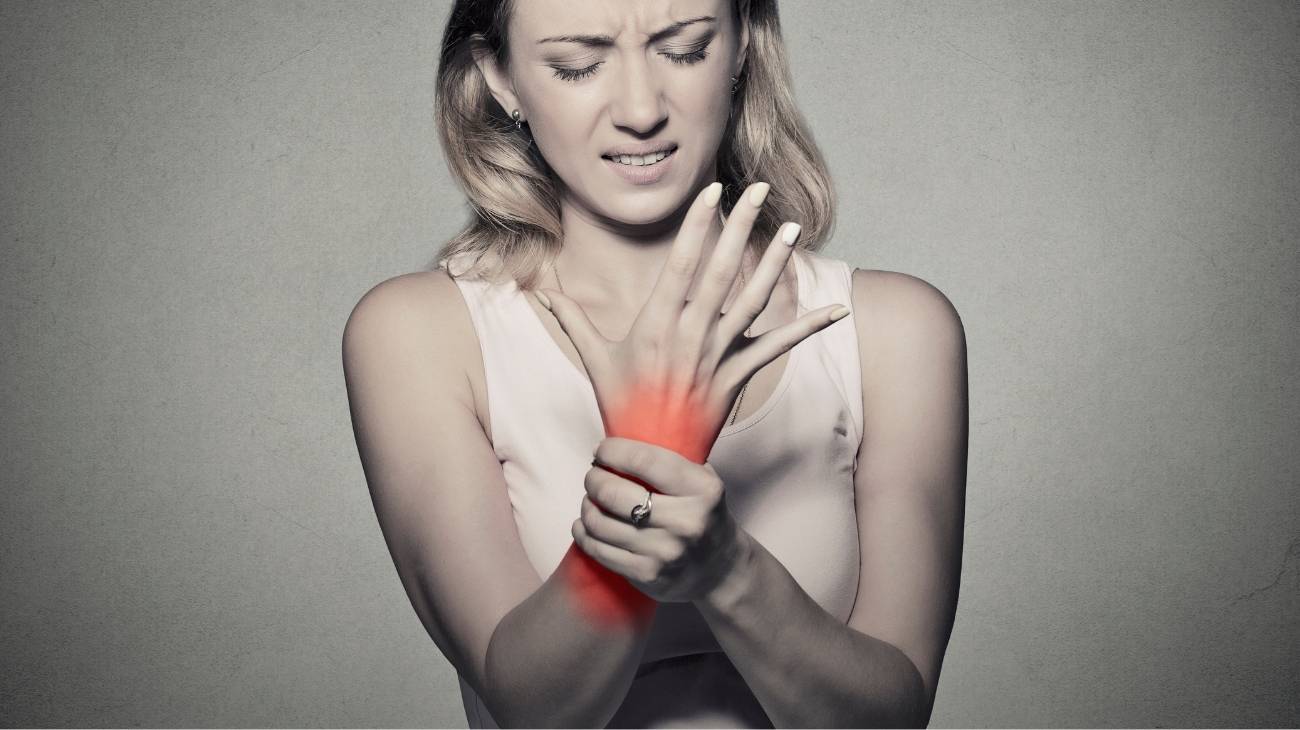- What is a wrist and hand sprain and what degrees are there?
- What are the causes and risk factors for sprained wrists?
- Best products for hand & wrist sprain
- Main symptoms that warn us that we have a wrist sprain
- What treatments are available to improve the symptoms of sprained wrists and hands?
- Which prevention methods for wrist sprains are the most effective?
Ligaments are the elastic fibrous connective tissue that have the function of binding bones together to keep them stable within a joint. In this way, they allow movement and, at the same time, prevent excessive movement of the bones. But when ligaments are suddenly stretched, an injury known as a "sprain" occurs.
Consequently, if the ligaments in the wrist joint suffer this type of tear, a wrist and hand sprain results. However, although they are common, the truth is that many people do not know what they consist of, what their causes, symptoms, treatments and forms of prevention are. Which we will explain below.
What is a wrist and hand sprain and what degrees are there?
Also known as "open wrist", a wrist and/or hand sprain is defined as a ligament injury that is generated by a traumatic distension or elongation of its fibres. In other words, it occurs once the ligaments of the wrist joint are affected by a sudden tear that can be partial or total, depending on the degree of severity of the injury.
A sprain in this category is extremely painful, tends to limit the movement of the hand and is considered a serious condition, as the wrist is the most complex joint in the body. It has two rows of bones (four bones in each) that are interconnected and relate to the metacarpal bones (or bones of the hand), as well as those of the forearm (radius and ulna).
Thus, the position of the wrist bones is due to their ligamentous support. Intrinsic ligaments that relate the bones of the two rows to each other, as well as extrinsic lig aments that link the bones of the forearm to the wrist, are delineated. Consequently, the most commonly injured ligament at the wrist is usually the one that connects the scaphoid to the lunate, called the scapho-semilunate ligament.
Thus, given the complexity of the structure of the wrist, a sprain in this part of the body has to be treated correctly depending on its severity so that it does not become an acute sprain that triggers other pathologies of a more serious nature. Therefore, when diagnosing a wrist and hand sprain, it is necessary to establish the grade of the injury in order to provide efficient treatment and this is subject to the following levels:
Grade 1
In this case, the ligaments of the wrist are strained, but not torn. As a result, it is a mild sprain that causes only mild pain, slight swelling and no associated joint laxity. As a result, patients are able to perform full range of motion.
Grade 2
Grade 2 wrist and hand sprain is a moderate condition. Since there is a partial rupture of the ligamentous portion of the wrist and therefore more pain is triggered, the inflammatory process is more pronounced and deformity or ecchymosis (bruising) occurs. In addition, slight joint instability is observed in the impacted individual.
Grade 3
This is the highest level of severity such a sprain can reach. Taking into account that, a total rupture of the ligamentous tissue is manifested and there is functional impotence of the affected joint. Consequently, the pain suffered by the patient is quite severe, there is also ecchymosis and intense deformity, as well as prominent swelling.
What are the causes and risk factors for sprained wrists?
Wrist sprains are usually caused by different types of accidents that lead to hyperflexion and hyperextension in this part of the hand. However, other specific causes for the onset of the symptomatological condition of a patient with a wrist sprain are also considered.
It is worth knowing which are the different risk factors from which a sprain can be triggered there:
- They are usually caused by a fall on the hand or direct trauma to the carpus.
- In sports, incorrectly performed techniques also tend to cause this type of injury. This is especially true for contact athletes, gymnasts and weightlifters.
- Another risk factor that causes a sprain in this category is overexertion or repetitive strain, which puts extreme strain on the wrist. Especially in certain sports such as paddle tennis, for example.
- If any physical activity involving constant use of the hands is carried out without having warmed up beforehand, it is possible that a sprain may occur.
- A sedentary lifestyle is another major cause of wrist sprains. Without exercise, the muscles are not able to perform at their strongest and as a result, they are injured.
- People who have weakness in the musculature around the wrist usually suffer from sprains.
- If an individual has previously suffered an injury to the wrist or a nearby region, the risk of spraining these ligaments increases.
- Bad habits, such as unhealthy eating, drinking alcohol and excessive smoking, weaken the body in general and increase the likelihood of spraining the wrist and hand.
Best products for hand & wrist sprain
Bestseller
-
2 Mittens: Microwave Arthritis Gloves (Hearts)
£24,95 -
2 Mittens: Microwave Arthritis Gloves (Oxford)
£24,95 -
Foot Massage Roller for Plantar Fasciitis (Black)
£20,95 -
Foot Massage Roller for Plantar Fasciitis (Green)
£20,95 -
Foot Massage Roller for Plantar Fasciitis (Pink)
£20,95 -
Microwaveable Wheat Bag for Pain Relief (Hearts)
£20,95 -
Microwaveable Wheat Bag for Pain Relief (Oxford)
£20,95 -
Microwaveable Wheat Bag for Pain Relief (Sport)
£20,95
Main symptoms that warn us that we have a wrist sprain
Whenever a sprain occurs in the wrist area, those affected suffer from a unique symptomatological picture that defines this condition and allows us to differentiate it from other similar pathological conditions. Consequently, it is important to know the main signs, symptoms and signals through which such a sprain can be diagnosed.
Therefore, we list each of them here:
- Pain in the hand and/or wrist: This will increase depending on the severity of the sprain.
- Stiffness in the area, which results in limited joint flexibility.
- Inflammation or swelling characterised by an increase in the volume of the region that has suffered the impact (hand or wrist) and sometimes causes the perception of heat.
- Increased sensitivity in the wrist, due to its alteration.
- Changes in skin colour, i.e. redness and bruising or haematomas.
- Limitation of mobility that may spread from the wrist to the hand.
- Loss of strength and as a result, the patient is unable to hold anything.
- Occasionally, there is a noise in the carpus every time the carpus moves (or tries to move).
What treatments are available to improve the symptoms of sprained wrists and hands?
Alternatively, patients suffering from a sprained wrist and hand have the possibility to resort to certain treatments to minimise the symptoms triggered by this condition. So instead of taking certain drugs on their own (not recommended).
It is more appropriate to undergo different therapeutic techniques and physiotherapy treatments to help normalise the functioning of this part of the body. As well as, taking certain food supplements and considering other options that are ideal to accelerate the rehabilitation process.
Alternative and complementary therapies
Nowadays, there are several complementary therapies that guarantee an analgesic, anti-inflammatory or sedative effect to reduce the symptoms of a sprained wrist. This means that, by default, they provide excellent results in alleviating the ailment of such an injury and regulating the functioning of the damaged joints.
Here, we mention and detail what they are and what they consist of:
- Heat and cold therapy: Using the properties of heat and cold, this treatment is used to improve the symptoms of an injury affecting the ligaments and joints, such as sprains. Cold is essential to soothe musculoskeletal conditions because it reduces pain and inflammation, as well as preventing damage to ligamentous tissue. In addition, heat improves the elasticity of ligaments, restores mobility and increases blood flow. Thus, it is indicated to apply cold compresses on the wrist for 15 to 20 minutes and alternate it with hot compresses during the same time (this can be done for two to three consecutive days and 3 or 4 times a day).
- Compression therapy: Another useful formula for healing a sprained wrist or hand is based on the use of compression therapy, which basically exerts a controlled force on an area of the body by means of an elastic element to reduce blood flow, regulate the function of the vascular wall, reduce inflammation and attenuate the ailment. In the case of wrist sprains, it is advisable to use a compression bandage or compression wrist brace on the wrist area (without over-tightening to avoid depriving the wrist of circulation).
- Acupuncture therapy: One of the most indicated treatments for carpal sprain pain is acupuncture therapy. To implement it, trained experts insert fine, painless needles into specific areas of the body to stimulate energy points connected to the nervous system in order to help the patient release endorphins and obtain a sense of relief by unblocking the channels that supply energy. As such, it is an appropriate treatment to eliminate pain, deflate the wrist and improve blood circulation.
- Natural remedies using plants: Patients with hand and/or wrist sprains can also speed up their recovery process through natural remedies based on plants that possess the required properties to soothe pain, eliminate swelling and relax the areas of the body that are strained. In this case, the most recommended inherent medicines to treat wrist ailments are: making poultices with turmeric, drinking ginger infusions, applying hot infusions of meadowsweet, drinking celery juice on an empty stomach, rubbing almond or coconut oil on the area, placing pieces of onion with a bandage and administering arnica on the afflicted wrist.
- Healthy lifestyle habits: In order to improve and even prevent wrist sprains, individuals can also consider various healthy habits and practice them day in and day out. With this, besides avoiding the ailment, they will even manage to have a healthier and more balanced life so that their organism acquires the ability to obstruct other pathologies. Thus, it is advisable to carry out the following: Use wrist braces or elastic bandages for training, give the carpus the necessary rest whenever it needs it, stretch to strengthen the muscles and ligaments, do physical activities gradually and do not force the wrist when carrying heavy objects.
Nutritional supplements
Nutritional or food supplements are mainly characterised by being products that contain one or more ingredients rich in vitamins, minerals, amino acids, enzymes and herbs. Therefore, they are ideal to complement a healthy and balanced food intake with the aim of providing total well-being to the organism.
In this way, the body in general will be able to function optimally and neutralise various pathologies, thanks to the fact that there are no deficiencies of these substances in the organism. Taking into account that, with this, it is easier to accelerate the recovery process required by a patient who has suffered injuries, such as sprained wrists and hands.
We recommend the following food supplements:
- Vitamin A: This refers to an antioxidant substance that works in the formation and maintenance of tissues, as well as optimising the immune system and providing significant benefits to various organs (heart, kidneys and lungs). However, as it has the ability to regenerate tissue and strengthen joints, it is recommended to consume vitamin A to mitigate the symptoms triggered by a sprain, from the following food sources: milk, eggs, cod liver oil, carrots, spinach, peppers, papaya, mango, peach, etc.
- Vitamin C: It is classified as an essential vitamin to preserve the health of ligaments and tendons, so it is appropriate to accelerate the rehabilitation process of sprains in wrists and hands. It has an analgesic effect to alleviate pain, is anti-inflammatory and contributes to increased synthesis of high quality collagen in the body. To consume it, you can resort to: oranges, grapefruit, melon, pineapple, kiwi, papaya, strawberries, mango, potato, red and green peppers, spinach, cauliflower, broccoli, cabbage, etc.
- Vitamin D: It is a vitamin that is stored in adipose tissue and has the function of absorbing the calcium necessary for the human body. In addition, it is involved in the formation of the bone system, participates in the synthesis of proteoglycans (basic in the biochemistry of joint cartilage) and is considered to be a substance that improves joints. Therefore, to prevent sprains, you can consume vitamin D through the following foods: beef liver, salmon, tuna, sardines, mackerel, oysters, trout, cheese, egg yolk, mushrooms, etc.
- Vitamin E: This vitamin is essential for the ligaments and tendons to ensure the best possible functioning. In addition to this, vitamin E helps to reduce inflammation in injured areas, because it increases blood flow by releasing cytokines that normalise the volume of the skin by gathering tissue-repairing cells. It is also known to increase efficiency in the treatment of structural weakness. Therefore, we recommend consuming vitamin E to improve the symptoms of sprains, either from: nuts, peanuts, asparagus, spinach, broccoli, avocado, salmon, sardines, pigeon peas, eel and vegetable oils (hazelnut, almond, sunflower, rapeseed and wheat germ).
- Collagen: By means of this elastic protein present in the skin, tendons, ligaments and other flexible structures of the body, patients suffering from sprains can also improve their symptoms. Collagen is involved in maintaining joint mobility and, as a result, helps to recover the movement of the region affected by the sprain (the hands or carpals, in this case). However, to prevent collagen deficiency, you should eat: eggs, milk, cheese, meat, meat, oily fish, avocado, celery, onion, cherries, strawberries and nuts.
Physiotherapy treatments
Physiotherapy is a health science that proposes different therapies or exercises that are efficient to provide a faster rehabilitation plan. In view of the fact that, its main mission is that the patient can feel a greater relief around the pain that generates an injury, as well as to desinflate the affected part, to re-establish the strength or resistance and to recover the movements in the joints, without much difficulty.
As if that were not enough, physiotherapy treatments are also important to reduce the chances of worsening the condition or suffering other more acute sprains in the hand or wrist, in this case. Of course, as long as the therapist studies the patient's diagnosis in order to establish a personalised recovery programme that fits the level of severity of the injury and the patient's general state of health.
The following phases are usually used in order to subject the affected person to physiotherapeutic treatment:
- First phase: Harmonisation of the wrist bones and electrotherapy to relieve pain, drainage of oedema and passive mobilisations.
- Second phase: Proprioception exercises in unloading, active-assisted mobilisations and chain stretching of the musculature with principles based on muscular chains of global postural re-education.
- Third phase: Active mobilisations, proprioception exercises under load and muscle strengthening exercises (to work on flexion and extension, ulnar and radial deviation, supination and pronation).
In addition to this, physiotherapy also recommends other types of exercises such as:
- Ball exercise: This is used to increase carpal strength when the carpus reaches a state of considerable improvement. Basically, the exercise consists of opening the palm of the hand towards the hand, placing a rubber ball there and holding it with the fingers. Afterwards, the patient has to keep both wrist and hand still while squeezing the ball gently. This needs to be done for 30 seconds and the cycle repeated 20 times for two consecutive days.
- Flexibility and movement exercises: In this case, it is advisable to warm the wrist with a warm towel or heating pad for 10 minutes. The person should then hold their hand outwards (in a horizontal position) and grasp the fingers with the healthy hand, then pull them back and flex the wrist. It is valuable to do this stretch for 30 seconds and repeat it 5 times (resting one minute for each cycle, so that the wrist can relax). Subsequently, it is necessary to bend the wrist in the opposite direction by stretching it towards the bottom and holding it for 30 seconds (this should also be done 5 times, with a minute's rest).
Medications
When pain suddenly increases, inflammation worsens and there is a tingling sensation or numbness, most patients with wrist and hand sprains choose to self-medicate by taking over-the-counter drugs (e.g. ibuprofen, paracetamol and naproxen) to relieve all the discomfort caused by the injury, without a prescription.
This is one of the most harmful procedures that people can practice, because it tends to cause certain side effects that are risky, such as diarrhoea, nausea, dizziness, fainting, drowsiness, fatigue, addiction and in the worst cases, cardiac arrest.
Therefore, for medication, it is recommended that you visit a specialist in orthopaedics and/or traumatology who can examine your sprained wrist in detail in order to obtain a concise diagnosis. Either by means of X-rays or magnetic resonance images that allow the condition of the area to be analysed in order to define its level of severity and formulate the appropriate treatment that will eliminate the pain and speed up the patient's rehabilitation.
Surgery
Although a sprained wrist or hand is considerable, in most cases, this pathology can be cured through non-surgical processes (therapies, physiotherapeutic treatments, natural remedies, food supplements, etc.). However, if the injury fails to heal properly and becomes a chronic sprain, the severity of the injury will increase dramatically and, as a consequence, surgery will be mandatory. This is the only efficient way to repair or replace a torn ligament.
Which prevention methods for wrist sprains are the most effective?
In the case of accidents, it is impossible to prevent the occurrence of a sprained wrist. However, as not all causes are due to such an eventuality, people have the possibility to prevent such a pathological condition from affecting them as far as possible.
More efficient care methods to obstruct the chances of suffering from such a sprain:
- Perform the correct sport technique: Before practising any sport, make sure you know the correct techniques.
- Warm up: Don't forget the importance of warming up and stretching. These exercises improve blood circulation and thus prepare the body for more intense exercise.
- Progressive training: Do workouts or exercises gradually, so that the ligaments are not overstretched.
- Compression clothing: Wear the right protective equipment whenever you do physical activities or move heavy loads, for example. In this case, wrist wraps or wrist bandages are the best option.
- Avoid sedentary lifestyles: Doing sport helps to strengthen bones, muscles, ligaments and tendons to prevent injuries.
- Healthy and balanced diet: consuming the recommended amount of vitamins and minerals (nutritional supplements). This is helpful for the body to function properly and to prevent sprains.
- Healthy lifestyle: Another useful method to avoid sprained wrists and hands is to avoid smoking and drinking alcohol in excess. These vices weaken people's health significantly.
- Protection at work: If you have a job that involves using your hands and wrists constantly (cutting hair, knitting, using the mouse and keyboard, etc.), it is valuable to take frequent breaks to avoid triggering this type of condition.
References
- Parmelee-Peters, K., & Eathorne, S. W. (2005). The wrist: common injuries and management. Primary Care: Clinics in Office Practice, 32(1), 35-70. https://www.primarycare.theclinics.com/article/S0095-4543(04)00142-3/fulltext
- Guly, H. R. (2002). Injuries initially misdiagnosed as sprained wrist (beware the sprained wrist). Emergency medicine journal, 19(1), 41-42. https://emj.bmj.com/content/19/1/41.short
- Rettig, A. C. (1998). Epidemiology of hand and wrist injuries in sports. Clinics in sports medicine, 17(3), 401-406. https://www.sciencedirect.com/science/article/abs/pii/S0278591905700922
- De Schrijver, F., & De Smet, L. (2001). Fracture of the hook of the hamate, often misdiagnosed as “wrist sprain”. The Journal of emergency medicine, 20(1), 47-51. https://www.sciencedirect.com/science/article/abs/pii/S073646790000281X
- May Jr, D. D., & Varacallo, M. (2022). Wrist Sprain. In StatPearls [Internet]. StatPearls Publishing. https://www.ncbi.nlm.nih.gov/books/NBK551514/
- Choi, B. C., Levitsky, M., Lloyd, R. D., & Stones, I. M. (1996). Patterns and risk factors for sprains and strains in Ontario, Canada 1990: An analysis of the workplace health and safety agency data base. Journal of Occupational and environmental Medicine, 379-389. https://www.jstor.org/stable/44994696
- Vicenzino, B., Paungmali, A., & Teys, P. (2007). Mulligan’s mobilization-with-movement, positional faults and pain relief: current concepts from a critical review of literature. Manual therapy, 12(2), 98-108. https://www.sciencedirect.com/science/article/abs/pii/S1356689X06001226
- Smith, R. W., & Reischl, S. F. (1986). Treatment of ankle sprains in young athletes. The American journal of sports medicine, 14(6), 465-471. https://journals.sagepub.com/doi/abs/10.1177/036354658601400606
- Pellow, J. E., & Brantingham, J. W. (2001). The efficacy of adjusting the ankle in the treatment of subacute and chronic grade I and grade II ankle inversion sprains. Journal of manipulative and physiological therapeutics, 24(1), 17-24. https://www.sciencedirect.com/science/article/abs/pii/S0161475401844961
- Petersen, W., Rembitzki, I. V., Koppenburg, A. G., Ellermann, A., Liebau, C., Brüggemann, G. P., & Best, R. (2013). Treatment of acute ankle ligament injuries: a systematic review. Archives of orthopaedic and trauma surgery, 133, 1129-1141. https://link.springer.com/article/10.1007/s00402-013-1742-5

